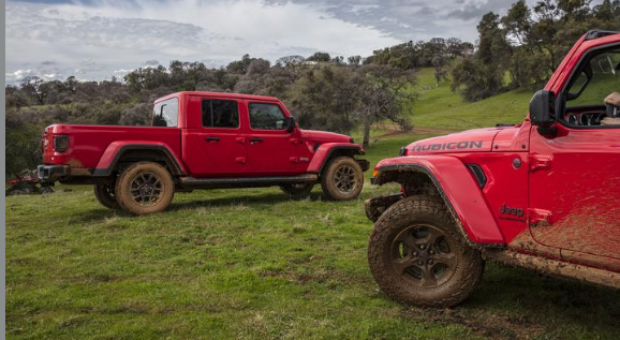
In the world of off-road vehicles, few names are as recognizable as the Jeep Wrangler and the Toyota 4Runner. Both vehicles boast a long heritage of rugged capability, designed to tackle the toughest terrains while providing reliability and a unique driving experience. However, despite their shared off-road ethos, they offer distinct characteristics, pros, and cons, making the choice between them a matter of personal preference, lifestyle, and priorities. Let’s delve into a comparison of these two off-road titans to see how they stack up against each other.
Off-Road Capability and Performance
Jeep Wrangler
Pros:
- The Wrangler is nearly synonymous with off-roading, featuring a design optimized for tough trails. Its short wheelbase, high ground clearance, and solid front and rear axles make it exceptionally maneuverable and capable in a variety of off-road conditions.
- It offers a range of 4×4 systems and the Rubicon model comes with additional off-road features such as locking differentials, an electronic sway bar disconnect, and heavy-duty axles, enhancing its trail prowess.
Cons:
- The focus on off-road capability does compromise the Wrangler’s on-road comfort and handling, with a ride that can be rough for daily driving.
- Fuel efficiency is not a strong point for the Wrangler, especially with the larger engine options or when equipped with off-road modifications.
Toyota 4Runner
Pros:
- The 4Runner’s body-on-frame construction and available four-wheel-drive system provide solid off-road capability, making it a reliable choice for adventures beyond the pavement.
- It offers a more comfortable ride than the Wrangler on paved roads, making it a more versatile choice for those who balance off-road excursions with daily commutes.
Cons:
- While capable, the 4Runner’s larger size and longer wheelbase can limit its maneuverability on narrow or particularly challenging trails compared to the Wrangler.
- The 4Runner’s engine, a 4.0-liter V6, provides adequate power but lacks the efficiency and performance options available in the Wrangler’s powertrain lineup.
Interior Comfort and Technology
Jeep Wrangler
Pros:
- Recent models of the Wrangler have seen significant improvements in interior quality, with better materials and more modern technology, including an available 8.4-inch touchscreen infotainment system with Apple CarPlay and Android Auto.
- The unique convertible nature of the Wrangler, with its removable roof and doors, offers an unparalleled open-air driving experience.
Cons:
- The Wrangler’s focus on off-road capability means noise levels and ride comfort are not as refined as some competitors, including the 4Runner.
- Interior space, especially cargo capacity, is more limited in the Wrangler compared to the 4Runner.
Toyota 4Runner
Pros:
- The 4Runner offers a spacious interior with more cargo space and comfortable seating for up to five passengers, making it better suited for families or those requiring more room for gear.
- Its infotainment system includes an 8-inch touchscreen with Apple CarPlay, Android Auto, and Amazon Alexa, providing good connectivity and entertainment options.
Cons:
- The interior design and technology of the 4Runner can feel dated compared to more recently updated competitors, including the Wrangler.
- Some materials within the 4Runner’s cabin, while durable, do not convey a sense of premium quality.
Safety and Reliability
Jeep Wrangler
Pros:
- The Wrangler offers a range of modern safety features, including blind-spot monitoring, forward-collision warning, and adaptive cruise control, enhancing its safety profile.
- Its strong community and aftermarket support mean that parts and expertise for repairs or upgrades are readily available.
Cons:
- Reliability ratings for the Wrangler have been mixed, with some owners reporting issues related to the vehicle’s build quality and electronics.
Toyota 4Runner
Pros:
- The 4Runner is renowned for its reliability, consistently scoring high in long-term dependability studies. This reputation is backed by Toyota’s overall brand strength in producing durable vehicles.
- Standard safety features include Toyota’s Safety Sense P, offering lane departure alerts, a pre-collision system with pedestrian detection, and automatic high beams.
Cons:
- The 4Runner’s safety technology, while competent, does not include some of the more advanced features available in competitors, including the latest version of the Wrangler.
Pricing and Value
Jeep Wrangler
Pros:
- The Wrangler holds its value exceptionally well, with high resale values reflecting its popularity and desirability in the used market.
- A wide range of models and options allows buyers to tailor the Wrangler to their specific needs and budget.
Cons:
- Initial pricing can be high, especially for upper trims like the Rubicon, and adding options or packages can quickly escalate the cost.
Toyota 4Runner
Pros:
- Like the Wrangler, the 4Runner is known for excellent resale value, a testament to its durability and lasting appeal.
- It offers a good balance of off-road capability and daily driving comfort, providing solid value for a broad range of buyers.
Cons:
- The 4Runner’s pricing can also be steep, particularly for higher-end trims and packages, making it a significant investment.
Conclusion
Choosing between the Jeep Wrangler and the Toyota 4Runner depends largely on how you prioritize off-road capability, daily driving comfort, interior space, and technology. The Wrangler is the better choice for pure off-roading enthusiasts who crave an iconic, convertible off-roader with strong aftermarket support. The 4Runner, on the other hand, offers a more balanced package, with respectable off-road ability, a more comfortable and spacious interior, and a reputation for reliability. Both vehicles stand as top choices in their category, and selecting between them is a matter of matching their strengths to your specific lifestyle and off-road ambitions
















